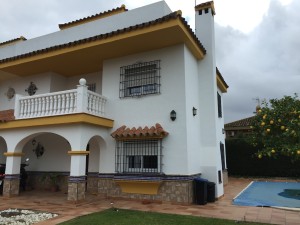
In the absence of new and abundant offer, the capital will take new routes of exposure real estate, as mergers and joint ventures.
Global real estate investment will surpass the trillion-dollar (900.000 million euros) in 2020 due to the ageing of the population, what it means to a 42,8% more concerning the 700.000 millions of dollars (630.000 million euros) registered in 2015.
So stated in the latest report published by JLL, financial and professional services company specializing in real estate, que señala que el envejecimiento de la población mundial promote a 30% el volumen de inversión inmobiliaria mundial de aquí a 2020.
También se prevé que los inversores institucionales increase your market share,that is currently in the 20%, due to the need to respond to the requirements of a world more aged population inversion.
Los principales actores de esta tendencia serán los inversores internacionales y is expected that the cross-border activity exceed the 50% del conjunto de la actividad de inversión de cara a 2020, above the 500.000 millions of dollars (450.000 million euros) annual. El principal incremento estará protagonizado por los flows of capital between regions.
The director of JLL global capital markets analysis, David Green-Morgan, explains that, face to 2050, the number of people with more of 55 years will exceed the total world population of 1950. This demographic event will have a “profound effect” en las estrategias de inversión inmobiliaria y todo parece indicar que los volúmenes provenientes del capital riesgo destinados a inversiones inmobiliarias directas increase in more than one 500%.
“Gran parte de estos flujos estarán impulsados por el aumento de las asignaciones de inversores institucionales looking for increased performance opportunities”, Adds.
The study points out that real estate investment markets have hosted various innovative decade trends when it comes of a sector that has become“truly international”, that it have been favored “by the stable flow of income that generates this kind of assets and the appeal of a diversified portfolios, a lower risk and protection against inflation”.
Alternative investments, functions and joint ventures
Also, indica que la definición de inversión inmobiliaria se ha ido ampliando up to now include assets related to health, care for the elderly, the residences of students, the residential developments, public and private real estate debt and the Constitution a segment ‘ multifamily’ beyond United States.
In this way, in the absence of new and abundant offer, the capital will take new routesto achieve direct real estate exposure being pursued, through joint ventures, associations, mergers and acquisitions or other sectors such as the health, the homes for the elderly and, more and more, the residential.
In this context, el sector inmobiliario alternativo se perfila como una important source of activity y una oportunidad en un panorama inversor asediado por las bajas rentabilidades y la volatilidad de los rendimientos.
Assignments have soared and, in 2015, operations were recorded by a record value of 15.000 million pounds (19.140 million euros) solo en el Reino Unido, lo que supone en torno a a 25% all investments in tertiary real estate, against the figure of five years ago, that did not come to the 10%.
Read more:
http://www.elmundo.es/economia/2016/03/15/56e83157e2704e0b4b8b45a9.html